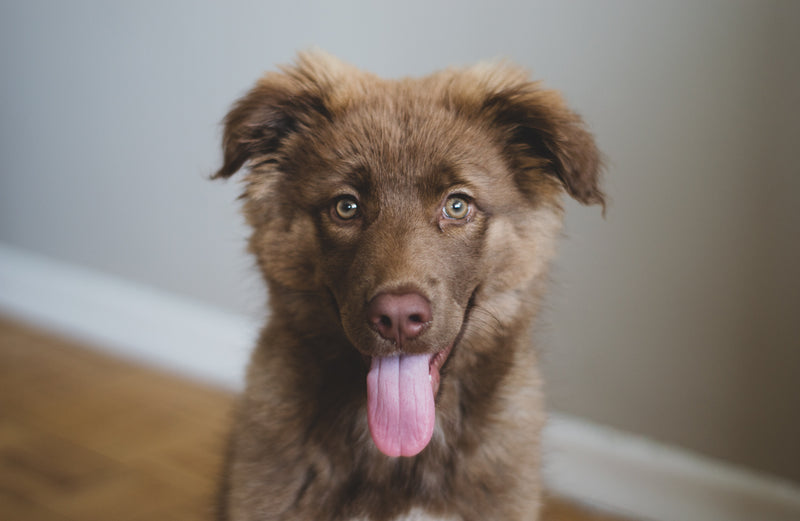Welcome to the world of pet care, where every day is an adventure filled with love, laughter, and responsibilities. As pet owners, we all want our furry friends to lead happy and healthy lives. But with so many different opinions and resources out there, it can be overwhelming to know what’s best for our pets. That’s why we’ve compiled the ultimate guide to mastering the art of caring for pets. In this post, you’ll discover secrets that are sure to transform your companions into happy and healthy animals. So buckle up and get ready to embark on a journey that will change your perspective on pet care forever!
Understanding Your Pet’s Nutritional Needs: Feeding Tips for a Healthy Companion
Feeding Tips for a Healthy Companion
Proper nutrition is essential to keep your pet healthy and active. Caring for pets means providing them with the right diet that suits their individual needs. Consult with your veterinarian regarding the type of food, feeding schedules, and portion sizes that are appropriate for your furry friend.
Avoid giving human food or table scraps as they can cause digestive issues and allergies. Provide plenty of fresh, clean water at all times to prevent dehydration.
When choosing commercial pet foods, check the label carefully to ensure it meets the nutritional requirements of your pet’s breed and age. Avoid cheap products that contain fillers or by-products which may be harmful to your pet’s health in the long-term.
Consider incorporating homemade meals using high-quality ingredients that provide a balanced diet rich in protein, fiber, vitamins, and minerals. Remember to monitor portions according to weight management goals.
By providing proper nutrition through a well-balanced diet suited for their species-specific needs is one way you can show love towards them while actively supporting their overall health and wellbeing.
Keeping Your Home Safe and Comfortable for Your Furry Friend
As a pet owner, it’s important to ensure that your home is a safe and comfortable environment for your furry friend. One of the first things you should do is pet-proof your home. This means removing any potential hazards such as toxic plants, chemicals, and small objects that could be swallowed.
Another important aspect of keeping your home safe for pets is securing all doors and windows. Make sure that screens are secure and that doors are kept closed to prevent pets from escaping or getting lost.
In addition to safety, it’s also important to provide a comfortable living space for your pet. This includes providing a cozy bed or crate, as well as plenty of toys and activities to keep them entertained.
Lastly, don’t forget about the importance of temperature control. Make sure your home is kept at a comfortable temperature for your pet, especially during extreme weather conditions.
By taking these steps, you can ensure that your home is a safe and comfortable haven for your furry friend.
The Importance of Regular Exercise and Playtime for Pets
Regular exercise and playtime are essential for a pet’s physical health and mental well-being. Dogs, in particular, require daily exercise to prevent behavioral issues such as anxiety or aggression. A brisk walk or run not only burns off excess energy but also helps to strengthen muscles and promote cardiovascular health.
Cats also need regular playtime to stimulate their natural hunting instincts and encourage healthy activity levels. Interactive toys like feather wands or laser pointers are great ways to engage your feline friend in physical activity.
Other animals like rabbits or ferrets benefit from supervised outside time (in a secure area) where they can explore new environments while getting some much-needed exercise.
Remember that the amount of exercise needed varies based on age, breed type, size and overall health status so it is always best to consult with your veterinarian regarding an appropriate workout routine for your furry friend. Don’t forget – there’s no better way to bond with your pet than through fun activities outdoors!
Maintaining Good Hygiene: Grooming Tips for Dogs, Cats, and Other Animals
Brushing and Bathing: Essential Grooming Techniques for Dogs and Cats
Regular grooming is important to keep your pets clean and healthy. Brushing their coat regularly not only helps to remove dirt, debris, and loose fur but also distributes natural oils that keep their skin moisturized. Dogs and cats have different types of coats that require unique care such as short-haired dogs shedding seasonally or long-haired cats matting easily. Regular bathing for both dogs and cats is essential practice in maintaining good hygiene as it minimizes odor-causing bacteria while keeping pets smelling fresh. Use pet-specific shampoos when giving them a bath as human shampoo may cause irritation or dryness on their skin. Remember, good grooming habits lead to happy and healthy furry friends!
Nail Trimming, Ear Cleaning, and Teeth Brushing: Keeping Your Pet Healthy Inside Out
Regular nail trimming, ear cleaning, and teeth brushing are crucial components of a pet’s hygiene routine that help maintain their health from the inside out. Overgrown nails can cause discomfort and even lead to infections or injuries. Cleaning your pet’s ears regularly can prevent wax buildup, bacterial growth, and reduce the risk of ear infection. Brushing your furry friend’s teeth helps remove plaque buildup that causes bad breath and tooth decay. These simple grooming tasks shouldn’t be overlooked as they play an essential role in keeping your pet happy and healthy for years to come. Nail trimming and teeth brushing are key phrases relevant to caring for pets.
Dealing with Shedding, Mats, and Tangles: Effective Solutions for Different Coat Types
Regular grooming is essential for a pet’s overall health and comfort. Dealing with shedding, mats, and tangles are some of the common challenges that pet owners face when it comes to maintaining good hygiene. For dogs or cats with long hair or thick coats, use a slicker brush to remove loose fur and prevent mats from forming. Use a de-matting tool or scissors to carefully trim out any knots or tangles. Regular bathing helps control shedding but be sure to use shampoos formulated specifically for pets as human products can cause skin irritation in animals (relevant key phrase: grooming tips). Consistency is key – establish a routine and stick with it (relevant key phrase: maintaining good hygiene).
Professional vs DIY Grooming Services: Weighing the Pros and Cons
Maintaining good hygiene is vital for keeping your pets healthy and happy. While regular grooming promotes a shiny, healthy coat, it also helps prevent skin infections, parasites and other health issues. When it comes to grooming your pet, you have the option of going to a professional groomer or doing it yourself. Professional grooming services can provide expert care if your pet has special needs or requires extra attention but can be expensive in the long run. On the other hand, DIY grooming allows you to save money while bonding with your furry friend. Ultimately, the key is finding what works best for you and your beloved companion(s).
Building Strong Bonds with Your Pets: Communication Techniques that Work
Understanding Your Pet’s Body Language: Tips for Effective Communication
Effective communication is key to building a strong bond with your furry friend. Understanding your pet’s body language is crucial in interpreting their needs and emotions. Dogs, for example, wag their tails when they’re happy and excited, while cats twitch their tails when they’re agitated or annoyed. Pay attention to their ears, eyes, and posture as well. A relaxed body and open eyes indicate a calm and content pet, while a tense body and dilated pupils may signal fear or aggression. By observing your pet’s behavior, you can respond appropriately and strengthen your relationship with them. Remember to use positive reinforcement and reward good behavior to encourage trust and affection.
The Power of Positive Reinforcement: Reward-Based Training for Pets
Positive reinforcement is a powerful tool in building a strong bond with your pet. This reward-based training technique involves rewarding good behavior with treats, praise, or playtime. By focusing on positive behaviors, you can encourage your pet to repeat them and discourage negative behaviors without resorting to punishment. This approach is effective for dogs, cats, and other animals and can be used to teach basic commands or more complex tricks. Consistency and patience are key when using positive reinforcement, as it may take time for your pet to learn new behaviors. With practice and persistence, you can strengthen your relationship with your furry companion while also promoting good behavior.
Listening to Your Pet’s Needs: How to Respond to Their Vocal Cues
Pets communicate with us in many ways, including through vocal cues. It’s important to pay attention to these cues and respond appropriately to build a strong bond with your furry friend. When your pet meows, barks, or chirps, they may be telling you they’re hungry, thirsty, or need to go outside. Responding promptly to these cues shows your pet that you care about their needs and strengthens your relationship. Additionally, pets may use vocalizations to express their emotions or indicate pain or discomfort. Being attentive to these cues can help you address any issues early on and prevent further problems. By listening and responding to your pet’s vocal cues, you can deepen your connection and create a happier, healthier companion.
Strengthening Your Bond through Playtime: Fun Activities for You and Your Pet
Playing with your pet isn’t just about fun and games. It’s also an excellent way to build a strong bond that promotes healthy companionship between you and your furry friend. Playtime not only provides mental stimulation, but it also serves as a form of physical exercise which is crucial for their health.
To strengthen the bond with your pet, consider engaging in interactive activities like fetch, tug-of-war or hide-and-seek. Try out new toys that provide entertainment and challenge them mentally such as puzzle feeders or treat-dispensing balls – this helps to keep them engaged and excited during playtime.
Remember to always watch for cues from your animal companion; they will show you what they enjoy most during playtime. Incorporating these key phrases
Protecting Your Pet’s Health: Common Illnesses to Watch Out For
As pet owners, we want nothing but the best for our furry friends. One way to ensure their well-being is through keeping them healthy and free from illnesses. Some of the most common health issues that pets encounter include ear infections, skin allergies, dental problems, and obesity.
It’s important to keep an eye out for any changes in your pet’s behavior or physical appearance as these may be symptoms of a larger problem at hand. Regular check-ups with a veterinarian can also help catch any potential health concerns before they become bigger issues.
Preventive measures such as proper nutrition, exercise and routine grooming can go a long way towards maintaining good overall health for your pet. Additionally, being aware of common diseases that affect animals like heartworm disease or Lyme disease can help you take extra precautions to protect your pet against these potentially serious conditions.
By staying informed about how to protect your furry friend from illness and injury you are playing an active role in ensuring their longevity and happiness!
Creating a Stress-Free Environment for Anxious or Aggressive Pets
Pets can experience anxiety and aggression due to various reasons such as fear, separation anxiety, or lack of socialization. As pet owners, it’s our responsibility to create a stress-free environment for our furry friends.
One way to do this is by providing a safe and comfortable space for them. This can be a crate, bed, or a designated area in the house where they can retreat when feeling overwhelmed. Positive reinforcement training is also an effective technique to help anxious or aggressive pets overcome their fears and build confidence.
It’s important to identify triggers that cause anxiety or aggression in your pet and avoid them whenever possible. This may include loud noises, unfamiliar people or animals, or certain situations that make them uncomfortable.
Another way to reduce stress in pets is by providing mental stimulation through interactive toys and puzzles. Regular exercise and playtime can also help reduce anxiety and aggression by releasing pent-up energy.
If your pet’s anxiety or aggression persists despite your efforts, seek advice from a veterinarian or animal behaviorist who can provide additional guidance on how to manage their behavior.
Making Time For Fun Activities with Your Four-Legged Friends
Fun Activities are a great way to bond with your pets and help them stay mentally stimulated. Regular activities promote healthy physical exercise, which keeps their bodies in good shape. Some favorite activities for dogs include fetch, tug of war, agility training, and swimming. If you have an indoor cat, try different types of toys or create a play area that includes scratching posts or tunnels.
Pet-friendly parks and trails offer opportunities for both dogs and cats to explore the outdoors safely. You can also take them on road trips or hiking adventures if they’re up for it! Spending quality time with your pet is essential in building trust and strengthening the bond between you two.
It’s important to keep in mind that some pets may not enjoy every activity you introduce to them. Pay attention to their body language and behavior cues so that you can determine what they like best. And remember, not all fun has to involve high energy activities – sometimes just snuggling up together on the couch is enough for a happy pet!
Nurturing Aging or Special Needs Pets: Caregiving Strategies That Matter
As pets age, they may require extra care and attention to maintain their health and happiness. Nurturing aging or special needs pets requires patience, understanding, and a willingness to adapt to their changing needs. One important aspect of caring for senior pets is providing them with a comfortable living environment that accommodates any mobility issues they may have. This may include adding ramps or steps to help them get around or providing soft bedding to cushion their joints.
Another key aspect of caring for aging pets is monitoring their health closely and addressing any issues promptly. Regular check-ups with a veterinarian can help catch potential health problems early on, allowing for more effective treatment. It’s also important to adjust their diet as needed to ensure they are getting the proper nutrients for their age and condition.
Above all, caregiving strategies that matter for aging or special needs pets involve showing them love and compassion. Spending quality time with your pet, providing them with mental stimulation through play or training, and simply being there for them can make all the difference in their well-being. With the right care and attention, you can help your furry friend enjoy their golden years to the fullest.
In conclusion, caring for pets is more than just providing them with food and shelter. It entails a deep understanding of their needs, building strong bonds, and creating a safe and comfortable environment for your fur baby to thrive in. As pet owners, it is our responsibility to ensure that they live happy and healthy lives.
Remember to keep your furry friend’s nutrition in check by following feeding tips, regularly exercising them, maintaining good hygiene through grooming techniques, being aware of common illnesses that can affect their health, creating stress-free environments for anxious or aggressive pets – these are all key elements in ensuring the overall wellbeing of your pet.
At [Shop Name], we offer high-quality products designed to make pet care easier and more enjoyable. From nutritious food options to toys that will keep them entertained for hours on end; we have everything you need to help you master the art of caring for pets. Visit our shop today and give your furry companion the love they deserve!
FAQs
Who can help me care for my pet while I’m away?
A trusted friend, family member, or professional pet sitter.
What should I feed my pet for a healthy diet?
A balanced diet of high-quality pet food and occasional treats.
How often should I take my pet to the vet?
At least once a year for routine check-ups and vaccinations.
Who can I call if my pet is sick or injured?
An emergency veterinarian or your regular vet during business hours.
What can I do to keep my pet happy and active?
Regular exercise, playtime, and socialization with other animals.
How can I overcome my fear of taking care of a pet?
Research and preparation, start with a low-maintenance pet, and seek guidance from a professional.




